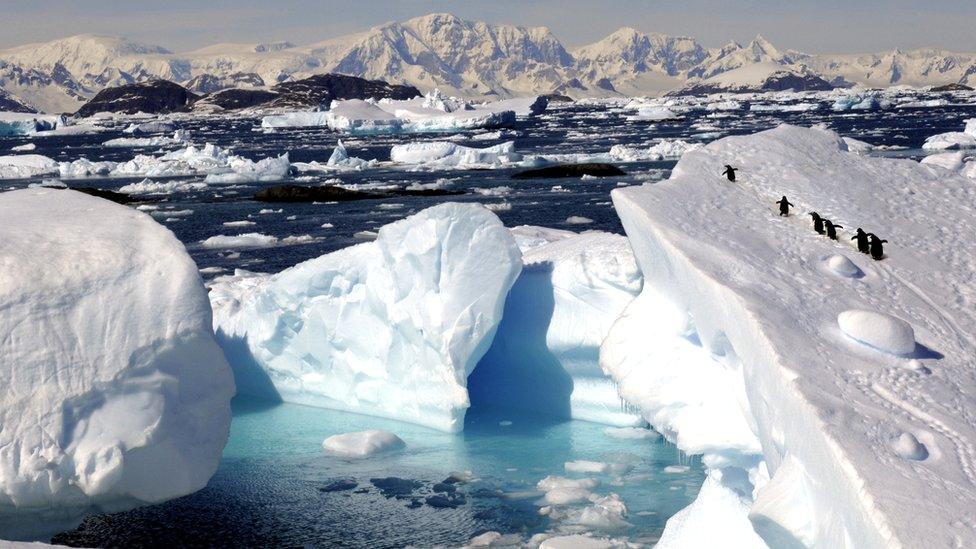What's happening in Antarctica?
- Published

Officials from 24 countries and the European Union have agreed that the Ross Sea, in Antarctica, will become the world's largest marine protected area.
At a meeting in Australia, it was agreed that around 1.5 million sq km of a part of the Southern Ocean would be protected from companies wanting to fish there for the next 35 years.
A minke whale swimming in the Ross Sea
The Ross Sea actually only makes up about 2% of this ocean, but it is home to a huge amount of wildlife.
Environmental campaigners have welcomed the decision saying it will help to protect Earth's cleanest area of ocean.
They hope it will be the first of many such zones across the world.
The purple area shows which part of the Southern Ocean is going to receive extra protection
You will find around two in every five of the world's Adelie penguins here, around one in three Antarctic petrels and around one in 16 of the world's minke whales. Killer whales live there too.
Antarctica is home to about two in every five of the world's Adelie penguins. One is seen here standing on top of some melting ice
It is also a rich source of krill, which is food for seals and whales, so it's very important that it is looked after.
Here are 10 things you probably didn't know about Antarctica...
1. It is a continent
Antarctica isn't a country - it's a whole continent!
It is sits at the Earth's south pole and is almost completely covered by an massive ice sheet that is thousands of metres thick.
Antarctica is situated at the Earth's south pole
2. It is bigger than Europe
Antarctica is absolutely enormous. It is almost 14 million sq km, which makes it the fifth-largest continent behind Asia, North America, South America and Africa.
This is about 58 times the size of the UK and twice the size of Australia!
It is also the world's highest continent, with an average land height of 2,300 m.
3. It is incredibly cold and windy!
The temperature on Antarctica has been known to go as low as around Ôłĺ90┬░C.
Because it is so cold, the air cannot hold as much moisture so it does not rain very much at all there.
This actually means Antarctica is considered to be a desert, but the other deserts that you know are much warmer...!
Especially in winter, the weather in Antarctica can be extremely bleak!
The winds can always blow as strongly as up to 351 km per hour.
4. You will find people there
As it is such an important place for scientific research, at any one time there may be many hundreds scientists spread across the various research stations all over the continent.
You will also find tourists there. According to Discovering Antarctica, in the early 1990s, about 5,000 tourists went every year. By 2009-2010, the continent welcomed around 37,000 visitors.
Scientists from all over the world are based in Antarctica all year around to carry out research
But nobody lives there permanently!
5. It changes shape every year
In the winter, the sea around Antarctica freezes over creating what is called sea ice. This makes the continent almost twice as big in winter.
6. The seasons are different
The end of the summer in Antarctica is in March and the end of the winter is in September - opposite to in the UK!
This is because Antarctica is in the Southern Hemisphere, which faces the Sun during our winter time.
Many tourists visit Antarctica to see the amazing continent for themselves
7. It will always be a place of peace
In 1959, several countries signed an agreement called the Antarctic Treaty, saying that Antarctica would be a peaceful place that they would work together to look after.
Without an international agreement like this, people would be free to do what they wanted there. However, this meant countries now work together to protect it.
Antarctic Treaty flags flying in Antarctica
- Published21 January 2015
- Published10 December 2013
- Published30 June 2014
